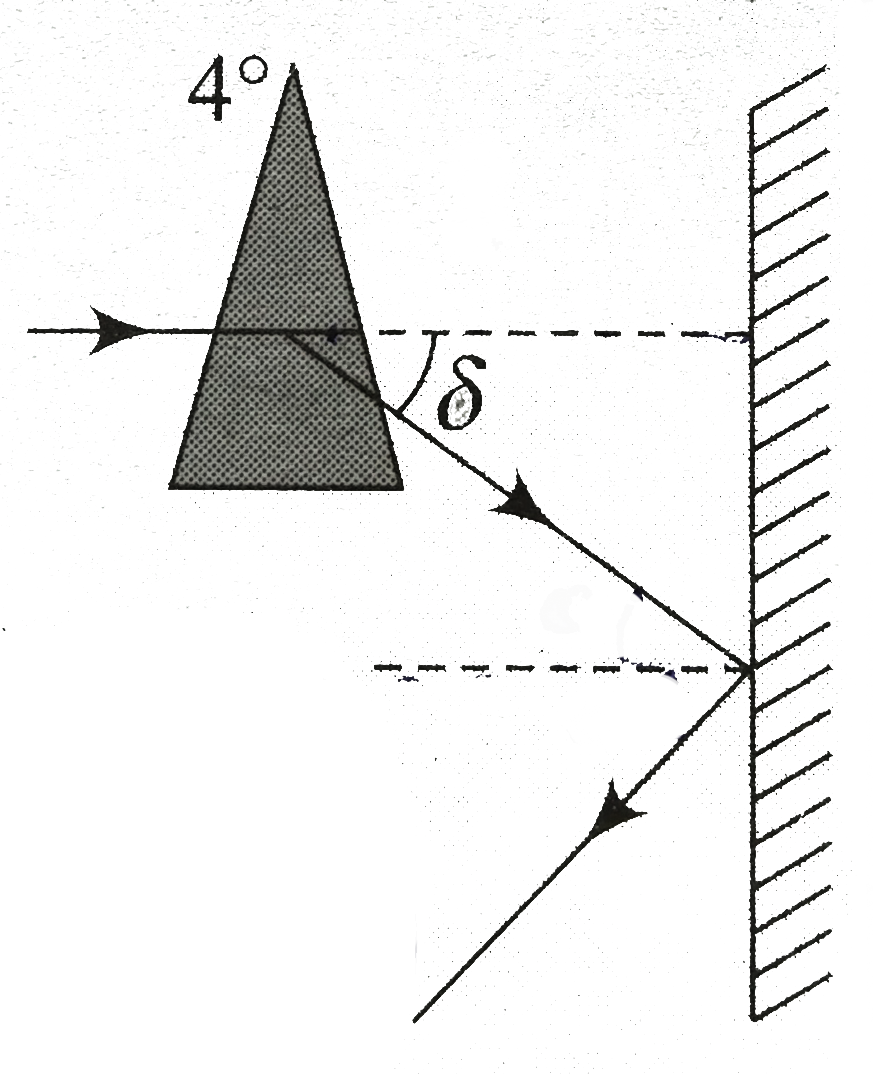Complete Solutions to B. More than one option is correct of chapter RAY OPTICS of Class 11 book with complete answers and questions
| Class 11 | PHYSICS |
| Chapter | RAY OPTICS |
| DC PANDEY MASTER PROBLEM PACKAGE | B. More than one option is correct |
| Number Of Questions | 20 |
| Academic Year | 2023-24 |
A point object is placed at 30 cm from a convex glass lens `(mu_(g) = (3)/(2))` of focal length 20 cm. The final image of object will be formed at infinity if
View SolutionFor a concave mirror of focal length f, image is 2 times larger. Then the object distance from the mirror can be
View SolutionFor a concave mirror
View SolutionFocal length of a lens in air is f. Refractive index of the lens is `mu`. Focal length changes to `f_(1)` if lens is immersed in a liquid of refractive index `(mu)/(2)` and it becomes `f_(2)` if the lens is immersed in a liquid of refractive index `2 mu`. Then
View SolutionFor what position of an object, a concave mirror forms a real image equal in size to the object?
View SolutionRefractive index of an equilateral prism is `sqrt(2)`.
View SolutionWrite laws of refraction. Explain the same with the help of ray diagram, when a ray of light passes through a rectangular glass slab.
View SolutionA ray of light of wavelength `u_(0)` and frequency `v_(0)` enters a glass slab of refractice index `mu` from air. Then
View SolutionThere are three optical media 1,2 and 3 with the refractive indices `mu_(1) gt mu_(2) gt mu_(3)`.
(TIR `rarr` total internal reflection)
View SolutionParallel rays of light are falling on convex sphere surface of radius of curvature R = 20 cm as show. Refractive index of the medium is `mu = 1.5`. A refraction from the spherical surface parallel rays

View SolutionFor a mirror linear magnification m comes out to `+2`. What conclusions can be drawn from this ?
View SolutionA convex lens made of glass `(mu_(g)=3//2)` has focal length f in air. The image of an object placed in front of it is inverted, real and magnified. Now the whole arrangement distance between object and lens. Then
View SolutionA converging lens is used to form an image on a screen. When the upper half of the lens is covered by an opaque screen
View SolutionA ray of light travelling in a transparent medium falls on a surface separating the medium from air at an angle of incidence of `45^(@)`. The ray undergoes total internal reflection. If n is the refractive index of the medium with respect to air, select the possible value of n from the following.
View SolutionA horizontal ray of light passes through a prism whose apex angle is `4^@` and then strikes a vertical mirror M as shown in Figure. For the ray to become horizontal after reflection, Find the angle by which the mirror must be rotated.

View SolutionThe image formed by a concave mirror is twice the size of the object. The focal length of the mirror is 20 cm. The distance of the object from the mirror `is//are`
View SolutionTwo refracting media are separated by a spherical interface as shown in the figure.

View SolutionA small air bubble is trapped inside a transparent cube of size `12 cm`. When viewed from one of the vertical faces, the bubble apears to be at `5 cm`. From it. When viewed from opposite face, it appears at `3 cm` from it.
View SolutionA plane mirror placed at the origin has `hat(i)` as the normal vector to its reflecting surface. The mirror beings to translate with a velocity `hat(i) + hat(j) + hat(k)`. At the same time an object which was initially at `hat(i) + hat(j)` starts moving with a velocity `(hat(i)+hat(j)) m//s` Now choose the correct options.
View SolutionA ray of light moving along a vector `(3sqrt(2) hat(i)-3 hat(j)-3 hat(k))` undergoes refraction at an interface of two media which is y-z plane. The refractive index for `x le 0` is 1 while for `x ge 0` it is `sqrt(2)`. Then,
View Solution
B. More than one option is correct questions and complete solutions for chapter RAY OPTICS of DC PANDEY ENGLISH of Class 11